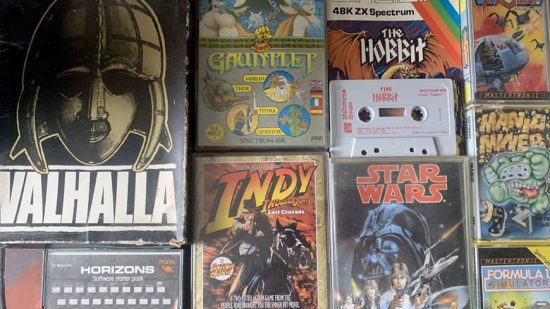Growing up, we weren’t a console family. My cousin had an Atari and then a NES, which were fun when I visited, but because my dad was a computer salesman at a time when home computing was brand-new, our house always had computers.
We didn’t own them, but that was a benefit as we got regular upgrades. My popularity on our council estate may have been related. My dad worked for Apple in the early 1980s, then Apricot, Tandy and Amstrad.
I loved the Tandy TRS-80, with its bafflingly obscure games (Cuthbert in Space or Pettigrew’s Diary, anyone?) and the Amstrad CPC series, which could run more famous games, such as The Hitchhiker’s Guide to the Galaxy or The Hobbit.
These computers were superior to my cousin’s consoles for many reasons. There was a much wider range of games (first on disk then cassette). The games themselves were usually made by bedroom coders, so they had a charm and originality missing from console games. And, perhaps most importantly, those PCs had word processing software (cue future professional writer) and the ability to write my own code. I’m still fond of BASIC.
But my fondness for those old machines means I now GOTO EBAY (geddit?) to try and recapture that childhood wonder and anticipation. This has proved an expensive hobby but also, I’m sad to report, not a particularly positive one. These old machines are worth a few quid.
In working order, an Amstrad CPC 464 can go for up to £200, despite the fact that you can play the old games on emulators. Indeed, I’ve grabbed a few emulations of old favourites, including Fantasy World Dizzy, the 1989 classic by the Oliver Twins.
But emulations weren’t the same. The itch wasn’t scratched. My sleek laptop or desktop simply didn’t match the gameplay. Compensating for a slightly crappy joystick was almost part of the game itself. Load times added to the anticipation and therefore the reward. Or so I thought.
I’ve been spending a lot of money on eBay during lockdown on various old systems and cassette games. Expecting the pure joy of my childhood, or the satisfying relief of nostalgia fulfilled, I bought time machines. Let me tell you, we’re spoiled now.
Those old systems were pioneering, yes. They represent the explosion of home computing and gaming that’s central to many of our lives. But wow, they’re bad to revisit. Not only do I not want to wait forever for a game to load, but I also don’t want to be hit with game-breaking bugs that will never be patched.
I don’t want to be able to hit the BREAK key during loading to access cheats and spoilers. I don’t want graphics limited not by design choice but by hardware limitations, and I don’t want to have to restart a game from scratch every time I load it.
But of course, I had forgotten all the frustrations, or that at the time they were fine because that’s all we had. Time had filtered out the bad memories and left me with delightful ones that, sadly, don’t match the reality at all.
There are many contemporary games inspired by the classics, and I will give my money to those instead. They have all the good ideas without trying to pretend the actual old games and systems were good, because they were simply good for the time. Don’t make the same mistake and try to go back. This is a cautionary tale. You can’t and shouldn’t revisit computers of the past. The loading times are too slow.
